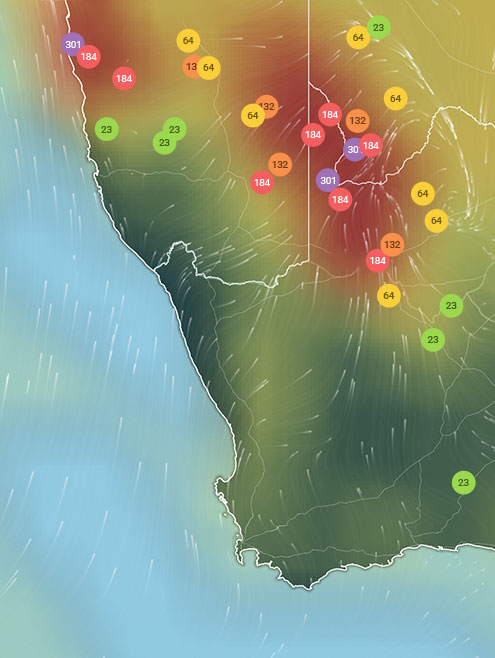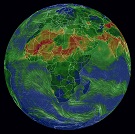Be the first to measure and contribute air quality data to your community
63.2K people follow this city






AIR QUALITY DATA SOURCE
Find out more about contributors and data sources| Weather | Rain |
| Temperature | 55.4°F |
| Humidity | 100% |
| Wind | 4.6 mp/h |
| Pressure | 30.1 Hg |

US AQI
65*
live AQI index
Moderate
| Air pollution level | Air quality index | Main pollutant |
|---|---|---|
| Moderate | 65* US AQI | PM2.5 |
| Pollutants | Concentration | |
|---|---|---|
| PM2.5 | 19*µg/m³ | |
PM2.5
x3.8
PM2.5 concentration in Mashhad is currently 3.8 times the WHO annual air quality guideline value
| Sensitive groups should reduce outdoor exercise | |
| Close your windows to avoid dirty outdoor air GET A MONITOR | |
| Sensitive groups should wear a mask outdoors GET A MASK | |
| Sensitive groups should run an air purifier GET AN AIR PURIFIER |
| Day | Pollution level | Weather | Temperature | Wind |
|---|---|---|---|---|
| Today | Moderate 65 AQI US | 57.2° 53.6° | ||
| Friday, Apr 26 | Moderate 56 AQI US | 68° 55.4° | ||
| Saturday, Apr 27 | Moderate 57 AQI US | 68° 55.4° | ||
| Sunday, Apr 28 | Moderate 66 AQI US | 68° 55.4° | ||
| Monday, Apr 29 | Moderate 81 AQI US | 60.8° 50° | ||
| Tuesday, Apr 30 | Moderate 60 AQI US | 68° 51.8° | ||
| Wednesday, May 1 | Moderate 64 AQI US | 71.6° 57.2° |
Interested in hourly forecast? Get the app
Mashhad has had some high levels of pollution in years past, and continues to do so in more present times, coming in with heightened readings of US AQI. Over the course of 2020, Mashhad came in with a yearly PM2.5 average reading of 25.6 μg/m³, placing it in 536th place out of all cities ranked worldwide, as well as 18th place out of all cities ranked in Iran.
In June of 2021, Mashhad presented with a US AQI reading of 79, placing it into the higher end of the 'moderate' ratings bracket, which is color coded as yellow and requires a reading of 52 to 100. The general public may experience little to no symptoms during such a pollution spell, however mild irritation to vulnerable individuals may start to appear, with irritation to the throat and mucous membranes all being possible.
Mashhad, like many other cities in Iran, is subject to the same polluting sources that see many of its neighboring cities (and indeed countries, with many in the region being some of the most polluted in the world) come in with continually high readings of air pollution. One of the main contributors would be fumes and emissions from vehicles. Many cars in use in Mashhad would be aged and possessing lower quality or worn down engines. This is due to there being less stringent road regulations in place throughout much of the country, resulting in some highly polluting vehicles still in use on the roads.
Other sources include power plants, factories and other industrial sites, all of which rely largely on fossil fuels to provide their energy. The combustion of coal, natural gas and diesel (used prevalently in heavy machinery present in construction sites, demolition areas or road repairs) leads to large amounts of chemical pollutants and hazardous particles being released into the air as a result.
This can lead to much more noxious oil vapor being released due to leakage, as well as higher amounts of pollutants being released due to the low quality combustion process taking place, with poor, or incomplete combustion processes often leading to the creation of extremely harmful materials, with ones such as black carbon, the main component of soot, as well as volatile organic compounds (VOCs) being created. Black carbon has carcinogenic properties when inhaled, and also possesses potent climate changing properties, due to it absorbing solar radiation from the suns rays and converting it directly to heat, creating a warming effect on the surrounding environment.
Health issues that can occur as a result of inhaling large amounts of pollution would be a whole host of respiratory related problems, along with cardiac issues also making themselves present, with some of these conditions being discussed in short.
Less prominent and shorter term illnesses would typically arise first, with ones such as dry coughs and chest pain, along with mild infections of the respiratory tract, headaches and nausea appearing. However, these can all go away if exposure to pollution is lessened or ceased entirely. More serious conditions that can occur if exposure continues to happen over a longer period of time would be ones such as emphysema, pneumonia and bronchitis, respiratory illnesses that fall under the chronic obstructive pulmonary disease bracket (COPD).
Continuous coughing, as well as the breathing of fine particles and certain chemical compounds may lead to inflammation of the lining of respiratory tract and lungs, with scarring of the lung tissue occurring if such exposure or pollution inhalation is sustained.
This can lead to a higher chance of the above mentioned health conditions occurring, along with a reduction in the full capacity of the lungs, and its ability to take in air (due to restricted breathing from scar tissue preventing the lungs from expanding fully or allowing oxygen to pass through the alveoli). Other issues include higher risks of cancer developing, particularly cancer of the lungs, throat and skin. This is also possible in many organs systems throughout the body due to the pervasive nature of PM2.5, and its ability to make its way into the bloodstream via the small air sacs in the lung, due its extremely small size.
Cardiac conditions such as heart attacks and arrythmias, along with strokes and other serious or life threatening conditions may also make themselves present, and as such keeping pollution exposure to a minimum becomes of increasingly greater importance. Pollution levels, and subsequent spikes and dips can be followed via the air quality maps found throughout the IQAir website, as well as on the AirVisual app, which is updated hourly with forecasts and current air pollution readings.
Observing the levels of air pollution that were taken over the course of 2020 as a reference point, it can be seen that although Mashhad maintained a fairly high level of air pollution throughout the entire year (with no month going lower than a 'moderate' rating of pollution at any reading between 12.1 to 35.4 μg/m³), there were certain months that went to the higher end of this rating bracket, and up into the next one ('unhealthy for sensitive groups').
The most polluted months on record was the first month and then the last two months of the year, with January, as well as November and December all coming in with the highest readings of PM2.5. Their respective readings in order were 30.3 μg/m³, 32.5 μg/m³ and 37.4 μg/m³.
This made December the most polluted month of the year, coming in with an 'unhealthy for sensitive groups' rating at 35.5 μg/m³ or beyond, the only month of the year to do so. For other future days when such readings are present, preventative measures may become necessary for vulnerable or at risk groups.
Despite Mashhad maintaining a PM2.5 count that was mostly over 20 μg/m³ for a majority of the year, there were two months earlier on in the year that had slightly more appreciable readings, indicating bouts of lower smoke, haze and polluting clouds of fine particles.
April and May had these cleanest readings, coming in at 15.2 μg/m³ and 18 μg/m³ respectively, making April the cleanest month of the year.
No locations are available.